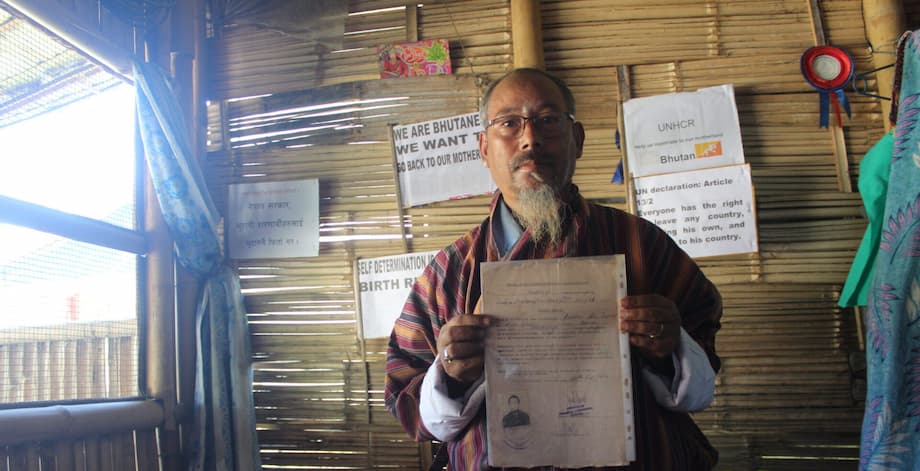A village craft at a crossroads
In Jigme village in Dophuchen gewog, a small workshop run by members of the Lhop community once turned out more than 2,000 sheets of handmade paper every month. The enterprise, launched in 2003 with the support of the Tarayana Foundation, supplied retailers in Thimphu, Paro, and Samtse. That rhythm has slowed. Orders arrive sporadically, production is irregular, and the center now employs two workers. The story is a window into the pressures facing Bhutan’s traditional paper craft, known locally as desho.
- A village craft at a crossroads
- What is desho and why it mattered
- From early promise to a thin order book
- Digital barriers and the sting of fraud
- Raw materials and sustainable harvesting
- Can local demand revive the craft
- Tourism, education, and institutional buyers
- The role of NGOs and policy options
- Risks of losing skills and identity
- At a Glance
Desho is made from the bark of the Daphne shrub. It is fibrous, strong, and valued for texture and durability. For generations, it supported religious life and administration across Bhutan, providing the surface for woodblock printed scriptures, official documents, and calligraphy. Today, it competes with imported papers that are cheaper and easier to buy in bulk.
Sonam Tshering, the manager who oversees the Jigme village center, explained how the changing market is affecting day-to-day operations.
Desho has some market issues. We cannot sell the products easily.
He said the workshop can ramp up the output when orders come, but that consistent business is rare. The result is a stop-start routine that makes planning difficult.
Production has become irregular since we do not get consistent orders.
Staffing reflects the thin pipeline. The center employs two workers, down from three, each earning Nu 8,000 a month. Nu is the Bhutanese ngultrum. While the pay is modest, villagers say it works because the workplace is nearby, commute costs are minimal, and alternatives are limited in a rural setting. The wider Lhop community still contributes by collecting bark and other inputs. When raw material is needed, residents respond to calls from the manager.
People from Dumtoe and Denchukha come with raw materials when there is a need. The collection depends on the demand I communicate to them.
What is desho and why it mattered
Bhutan’s papermaking tradition, often referred to as Dey zo or Shog zo, sits at the heart of the country’s literary and artistic heritage. Monasteries relied on handmade paper for woodblock printing, a practice that helped preserve Buddhist texts and local literature. Calligraphers trained for years to prepare scripts for engraving and printing. According to cultural research on woodblock traditions in Asia, Bhutan’s papermaking drew on Daphne species for different paper qualities. The craft’s historical role linked artisans, monasteries, and official life in a tight chain of knowledge and supply.
The process remains labor intensive. Bark is stripped carefully from the shrub, soaked, boiled, cleaned, and beaten into pulp. Artisans lift the pulp on frames to form sheets, then press and dry them to an even finish. Desho resists insects and holds ink well. Those properties made it the preferred surface for scriptures and archival documents. The arrival of imported paper and industrial pulp changed buying habits across the region. Price and convenience shifted demand away from traditional mills, even as interest in heritage goods persisted among artists, monks, and tourists.
From early promise to a thin order book
In Jigme, the Tarayana Foundation’s early hands-on support helped the workshop reach buyers and build confidence. Villagers learned production steps, quality control, and ways to present their paper to retailers. Sonam Tshering remembers a time when marketing support lifted sales.
Back then, after paying the workers, we could still make some profit.
Once the foundation stepped back from day-to-day management, the villagers took the lead. The center still has the capacity to produce at volume, but orders tapered. Retailers scrambled during the pandemic years, imported paper remained plentiful, and the small team lacked a clear channel to new buyers. Domestic awareness is thin. Many Bhutanese consumers have never heard of the Jigme workshop or do not know where to buy its sheets. Without steady outgoing shipments, the unit runs in short bursts, then stays idle while the manager waits for the next request.
Digital barriers and the sting of fraud
Reaching customers online could expand the market beyond nearby towns. Yet the digital shift has proven difficult for the Jigme team. The manager said he is not comfortable with e-commerce or social media sales.
I am not educated, so I cannot do online marketing.
A bad experience deepened that hesitation. The center lost more than Nu 80,000 in a fraudulent online transaction. Trust is central to remote sales. When a small rural unit runs into a scam, the loss is not simply money. It undercuts confidence in all digital channels. Many craft producers need guidance on secure payments, reliable platforms, and how to verify buyers. Aggregated online stores run by trusted groups, or listings managed by NGOs and cooperatives, can reduce risk for individual artisans by screening orders and handling transactions through vetted systems.
Raw materials and sustainable harvesting
Desho production begins with bark collection. In Jigme, villagers from Dumtoe and Denchukha supply the workshop when called. Sustainable harvesting is critical. Daphne is a shrub that can regenerate if stripping is done carefully and in season. If bark removal is rushed or careless, the plant may die, shrinking the base for future harvests.
Other districts have learned that supply can tighten. In Trashi Yangtse, traditional paper makers faced a shortage of Daphne due to over-extraction. To address this, the Boomdeling Wildlife Sanctuary planted around 1,500 Daphne saplings with plans for more. That program shows how resource management supports cottage industries. It also hints at the costs of recovery when extraction outpaces regrowth. For small units like the one in Jigme, clear harvesting rules, replanting, and coordination with forestry and conservation teams can keep the pipeline steady.
Can local demand revive the craft
Some residents say the first step is awareness. If buyers and retailers knew that a handmade paper center operated in Jigme, more orders might come from schools, monasteries, artists, and offices. A local resident, Chimmi, put the case plainly.
If more Bhutanese supported local paper instead of importing, it would help the economy and keep initiatives like this going.
There is room to grow domestic demand. Desho sheets and finished items such as journals, greeting cards, notebooks, and certificates fit caringly made product lines that already exist in Bhutan. Bookstores and gift shops look for items with a clear origin story. Monasteries and cultural institutions can source paper for limited runs of texts or for restoration work. Private offices often need short-run stationery for important events. A push to buy local paper for invitations, awards, and corporate gifts could move significant volumes to rural producers, particularly when agencies coordinate orders and give reliable lead times.
Tourism, education, and institutional buyers
Tourism provides a natural match for traditional crafts. Visitors tend to purchase items that carry a story and a sense of place. Desho-based journals, art prints, and cards serve that purpose. Workshops that host live demonstrations can also earn fees while turning viewers into buyers. Clear signage in craft markets and gallery partnerships in Thimphu and Paro help shops explain how the paper is made and why it matters.
Education is another channel. Art and design classes can use desho in printmaking and calligraphy. Schools and universities that incorporate Bhutanese materials into coursework build appreciation for the craft. When graduating classes or clubs choose locally made paper for certificates and yearbooks, they not only support a supply chain but also normalize the use of traditional materials in modern contexts.
Hotels, event planners, and cultural festivals also favor distinctive materials for menus, programs, and place cards. A single large ceremony can consume hundreds of sheets. If specifications like size, thickness, and finish are standardized, it becomes easier for buyers to place repeat orders with confidence.
The role of NGOs and policy options
The Jigme workshop still receives occasional material and equipment support from the Tarayana Foundation, but the day-to-day business is now in local hands. Many small producers benefit from coaching in packaging, pricing, and quality consistency. Shared distribution networks reduce transport costs for rural teams that sell to urban shops. Joint stalls at fairs and trade shows expose artisans to institutional buyers.
Policy levers can help. A national program that certifies quality and origin would make it easier for retailers to stock traditional paper with confidence. Trademark and brand awards spur small firms to differentiate products. Bhutan’s first National Trademark Award encouraged cottage industries to improve quality and build reputation, with Tshejor’s Ayzey taking the top honor in 2018. A similar spotlight on desho makers would reward consistency and storytelling, two elements that drive value for heritage goods.
On the digital front, pooled e-commerce storefronts managed by credible organizations can bridge the skills gap while shielding rural producers from fraud. Training in photo basics, order handling, and safe payments would lower the risk of a repeat loss like the one that hit Jigme. Partnerships with postal and courier services can create predictable shipping options at a fair cost.
Risks of losing skills and identity
The Jigme unit’s workforce has shrunk to two paid employees. If work remains stop-start, it becomes hard to keep younger residents engaged or to justify long apprenticeships. Once skills scatter, rebuilding capacity takes years. Other Bhutanese crafts offer cautionary examples. Laya’s traditional bamboo hat saw a sharp decline in active weavers several years ago. When only a few elders are left to carry a tradition, one illness or relocation can tip a practice toward silence.
Desho is more than a product. It is a link to the way Bhutan preserved and circulated knowledge for centuries. The craft blends botany, chemistry, and design in a quiet process that rewards patience. If the market stays weak, the people who know how to manage bark harvests, pulp preparation, sheet formation, and finishing will find other livelihoods. Keeping the practice viable means matching that knowledge with steady demand and safe ways to reach buyers, both in Bhutan and beyond.
At a Glance
- A desho paper center in Jigme village, Dophuchen gewog, was launched in 2003 with Tarayana Foundation support and once produced more than 2,000 sheets a month.
- Orders have fallen, production is irregular, and the center now employs two workers at Nu 8,000 each per month.
- The Lhop community supplies raw materials and supports the process, collecting Daphne bark as needed.
- Manager Sonam Tshering reports difficulty selling into the market and a loss of consistency in orders.
- The center suffered a fraudulent online transaction of more than Nu 80,000, deepening caution toward digital sales.
- Desho is part of a long Bhutanese tradition that supported woodblock printing, calligraphy, and record keeping.
- Resource management matters: a Daphne shortage in Trashi Yangtse prompted the planting of about 1,500 saplings to restore supply.
- Better domestic awareness, institutional buying, tourism-oriented products, and trusted e-commerce channels could stabilize demand for rural producers.




